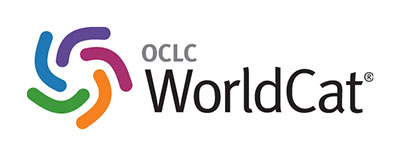Irrigantes utilizados en Pulpectomias de dientes deciduos. Revisión de la literatura.
DOI:
https://doi.org/10.26871/killcanasalud.v7i1.666Resumen
Objetivo: El objetivo de este artículo es realizar una actualización de conocimientos y comparar la eficacia de los diversos irrigantes existentes, utilizados en odontopediatría para desinfección de conductos radiculares. Contexto: El sistema de conductos radiculares en dientes temporales posee una anatomía compleja dificultando una adecuada limpieza. La irrigación es la clave para el pronóstico y éxito del tratamiento endodóntico pediátrico por lo que la búsqueda de un irrigante ideal ha generado el desarrollo e investigación de varias soluciones irrigantes creando confusión en el personal clínico al momento de su elección. Metodología: Se realizó una revisión bibliográfica en las bases de datos: PubMed, Science Direct, Wiley Online Library, Cochrane y Ebsco; se incluyeron 30 artículos en inglés publicados en el periodo 2014-2020. Conclusiones: La instrumentación mecánica no es suficiente para la desinfección del conducto, por lo que es necesario la irrigación con sustancias combinadas ya que no existe un irrigante ideal, sin embargo, encontramos al NaOCl al 2,5% como la solución que cumple con la mayoría de las características descritas para el irrigante idóneo.
Descargas
Citas
Moradi F, Haghgoo R. Evaluation of antimicrobial efficacy of nanosilver solution, sodium hypochlorite and normal saline in root canal irrigation of primary teeth. Contemp Clin Dent [Internet]. 2018 Sep 1 [cited 2020 Jul 25];9(6):S227–32. Available from: https://pubmed.ncbi.nlm.nih.gov/30294149/
Pozos-Guillen A, Garcia-Flores A, Esparza-Villalpando V, Garrocho-Rangel A. Intracanal irrigants for pulpectomy in primary teeth: a systematic review and meta-analysis. Int J Paediatr Dent. 2016;26(6):412–25.
Kaur R, Singh R, Sethi K, Garg S, Miglani S. Irrigating Solutions in Pediatric Dentistry : Literature Review and Update. J Adv Med Dent Sci Res. 2014;2(2):104–15.
Walia V, Goswami M, Mishra S, Walia N, Sahay D. Comparative evaluation of the efficacy of chlorhexidine, Sodium hypochlorite, the diode laser and saline in reducing the microbial count in primary teeth root canals - an in vivo study. J Lasers Med Sci. 2019;10(4):268–74.
Botton G, Pires CW, Cadoná FC, Machado AK, Azzolin VF, Cruz IBM, et al. Toxicity of irrigating solutions and pharmacological associations used in pulpectomy of primary teeth. Int Endod J. 2016;49(8):746–54.
Zehnder M. Root Canal Irrigants. J Endod. 2006;32(5):389–98.
Öter B, Topçuoglu N, Tank MK, Çehreli SB. Evaluation of Antibacterial Efficiency of Different Root Canal Disinfection Techniques in Primary Teeth. Photomed Laser Surg. 2018;36(4):179–84.
Hariharan VS, Nandlal B, Srilatha KT. Efficacy of various root canal irrigants on removal of smear layer in the primary r1. Hariharan VS, Nandlal B, Srilatha KT. Efficacy of various root canal irrigants on removal of smear layer in the primary root canals after hand instrumentation: A scannin. J Indian Soc Pedod Prev Dent. 2010;28(4):271–7.
Estrela C, Estrela CRA, Barbin EL, Spanó JCE, Marchesan MA, Pécora JD. Mechanism of action of sodium hypochlorite. Braz Dent J. 2002;13(2):113–7.
Gomes B, Ferraz C, Vianna M, Berber V, Teixeira F, Souza-Filho F. In vitro antimicrobial activity of several concentrations of sodium hypochlorite and chlorhexidine gluconate in the elimination of Enterococcus faecalis. Int Endod J. 2001;34(6):424–8.
Ramachandra JA, Nihal NK, Nagarathna C, Vora MS. Root canal irrigants in primary teeth. World J Dent. 2015;6(4):229–34.
Greenstein G, Berman C, Jaffin R. Chlorhexidine: An Adjunct to Periodontal Therapy. J Periodontol. 1986;57(6):370–7.
Mohammadi Z, Abbott P V. The properties and applications of chlorhexidine in endodontics. Int Endod J. 2009;42(4):288–302.
Ercan E, Özekinci T, Atakul F, Gül K. Antibacterial activity of 2% chlorhexidine gluconate and 5.25% sodium hypochlorite in infected root canal: In vivo study. J Endod. 2004;30(2):84–7.
Mirhadi H, Abbaszadegan A, Ranjbar MA, Azar MR, Geramizadeh B, Torabi S, et al. Antibacterial and Toxic Effect of Hydrogen Peroxide Combined with Different Concentrations of Chlorhexidine in Comparison with Sodium Hypochlorite. J Dent (Shiraz, Iran). 2015;16(4):349–34955.
Hameed SA, Ibrahim SA, Al-Nasrawi S. Comparative study to evaluate the antimicrobial effect of mtad, 17% edta, and 3% naocl- against enterococcus faecalis in primary teeth for root canals therapy (In vitro study). Medico-Legal Updat. 2020;20(1):340–5.
Şen BH, Ertürk Ö, Pişkin B. The effect of different concentrations of EDTA on instrumented root canal walls. Oral Surgery, Oral Med Oral Pathol Oral Radiol Endodontology. 2009;108(4):622–7.
Nogo-Živanović D, Kanjevac T, Bjelović L, Ristić V, Tanasković I. The effect of final irrigation with MTAD, QMix, and EDTA on smear layer removal and mineral content of root canal dentin. Microsc Res Tech. 2019;82(6):923–30.
Olivieri JG, García Font M, Stöber E, de Ribot J, Mercadé M, Duran-Sindreu F. Effect of manual dynamic activation with citric acid solutions in smear layer removal: A scanning electron microscopic evaluation. J Dent Sci. 2016;11(4):360–4.
Herrera D, Santos Z, Tay L, Silva E, Loguercio A, Gomes B. Efficacy of different final irrigant activation protocols on smear layer removal by EDTA and citric acid. Microsc Res Tech. 2013;76(4):364–9.
Demirel A, Yüksel BN, Ziya M, Gümüş H, Doğan S, Sari Ş. The effect of different irrigation protocols on smear layer removal in root canals of primary teeth: a SEM study. Acta Odontol Scand [Internet]. 2019;77(5):380–5. Available from: https://doi.org/10.1080/00016357.2019.1577491
Farhin K, Viral P, Thejokrishna P. Reduction in Bacterial Loading Using MTAD as an Irrigant in Pulpectomized Primary Teeth. J Clin Pediatr Dent. 2015;39(2):100–4.
Singla MG, Garg A, Gupta S. MTAD in endodontics: An update review. Oral Surgery, Oral Med Oral Pathol Oral Radiol Endodontology [Internet]. 2011;112(3):e70–6. Available from: http://dx.doi.org/10.1016/j.tripleo.2011.02.015
Lim B, Parolia A, Chia MSY, Jayaraman J, Nagendrababu V. Antimicrobial efficacy of QMix on Enterococcus faecalis infected root canals: a systematic review of in vitro studies. Restor Dent Endod [Internet]. 2020 [cited 2020 Aug 6];45(2). Available from: /pmc/articles/PMC7239686/?report=abstract
Dunavant T, Regan J, Glickman G, Solomon E, Honeyman A. Comparative Evaluation of Endodontic Irrigants against Enterococcus faecalis Biofilms. J Endod. 2006;32(6):527–31.
Dua A, Dua D, Uppin V. Evaluation of the effect of duration of application of Smear Clear in removing intracanal smear layer: SEM study. Saudi Endod J [Internet]. 2015 Jan 1 [cited 2020 Jul 30];5(1):26. Available from: http://www.saudiendodj.com/text.asp?2015/5/1/26/149083
Sadegh M, Sohrabi H, Kharazifard M, Afkhami F. Effect of Smear Clear and some other commonly used irrigants on dislodgement resistance of mineral trioxide aggregate to root dentin. J Clin Exp Dent. 2017;9(5):617–21.
Moghadas L, Shahmoradi M, Narimani T. O riginal R esaerch Antimicrobial activity of a new nanobased endodontic irrigation solution : In vitro study. 2012;3(4).
Chaloupka K, Malam Y, Seifalian AM. Nanosilver as a new generation of nanoproduct in biomedical applications. Trends Biotechnol [Internet]. 2010;28(11):580–8. Available from: http://dx.doi.org/10.1016/j.tibtech.2010.07.006
Chan ELK, Zhang C, Cheung GSP. Cytotoxicity of a novel nano-silver particle endodontic irrigant. Clin Cosmet Investig Dent. 2015;7:65–74.
Kapoor S, Manuja N, Chaudhary S, Kaur H, Chaitra TR, Sinha AA. Effect of Qmix and other irrigants on dentin adhesives in pulp chambers of primary teeth: SEM study. J Clin Pediatr Dent. 2017;41(5):362–7.
Zhang R, Chen M, Lu Y, Guo X, Qiao F, Wu L. Antibacterial and residual antimicrobial activities against Enterococcus faecalis biofilm: A comparison between EDTA, chlorhexidine, cetrimide, MTAD and QMix. Sci Rep [Internet]. 2015 Aug 6 [cited 2020 Aug 6];5. Available from: /pmc/articles/PMC4526883/?report=abstract
Agarwal S, Tyagi P, Deshpande A, Yadav S, Jain V, Rana K. Comparison of antimicrobial efficacy of aqueous ozone, green tea, and normal saline as irrigants in pulpectomy procedures of primary teeth. J Indian Soc Pedod Prev Dent [Internet]. 2020 Apr 1 [cited 2020 Aug 5];38(2):164. Available from: http://www.jisppd.com/text.asp?2020/38/2/164/288214
Goztas Z, Onat H, Tosun G, Sener Y, Hadimli HH. Antimicrobial effect of ozonated water, sodium hypochlorite and chlorhexidine gluconate in primary molar root canals. Eur J Dent [Internet]. 2014 [cited 2020 Aug 6];8(4):469–74. Available from: /pmc/articles/PMC4253101/?report=abstract
Kapdan A, Kustarci A, Tunc T, Sumer Z, Arslan S. Which is the most effective disinfection method in primary root canals: Conventional or newly developed ones? Niger J Clin Pract. 2015;18(4):538–43.
Chandwani M, Mittal R, Chandak S. Effectiveness of Morinda citrifolia juice as an intracanal irrigant in deciduous molars : An in vivo study. 2017;(July).
Mookhtiar H, Hegde V, Shanmugasundaram S, Chopra MA, Kauser MNM, Khan A. Herbal Irrigants : A literataure Review Herbal Irrigants ; A new Era in Endodontics : Literature Review. Int J Dent Med Sci Res. 2019;3(3):15–22.
Octavia A, Budiardjo SB, Indiarti IS, Fauziah E, Suharsini M, Sutadi H, et al. Garlic extract efficacy against the viability of enterococcus faecalis (In vitro). Int J Appl Pharm. 2019;11(1):194–7.
Wang L, Bassiri M, Najafi R, Najafi K, Yang J, Khosrovi B, et al. Hypochlorous acid as a potential wound care agent: part I. Stabilized hypochlorous acid: a component of the inorganic armamentarium of innate immunity. J Burns Wounds [Internet]. 2007;6:e5. Available from: http://www.ncbi.nlm.nih.gov/pubmed/17492050%0Ahttp://www.pubmedcentral.nih.gov/articlerender.fcgi?artid=PMC1853323
Verma N, Sangwan P, Tewari S, Duhan J. Effect of Different Concentrations of Sodium Hypochlorite on Outcome of Primary Root Canal Treatment: A Randomized Controlled Trial. J Endod [Internet]. 2019;45(4):357–63. Available from: https://doi.org/10.1016/j.joen.2019.01.003
Yüksel BN, Demirel A, Ziya M, Kolçakoğlu K, Doğan S, Sarı Ş. The effects of various irrigation protocols on root canal wall adaptation and apical microleakage in primary teeth. Acta Odontol Scand [Internet]. 2020;78(5):321–6. Available from: https://doi.org/10.1080/00016357.2019.1709890
Tulsani SG, Chikkanarasaiah N, Student P, Dentistry P. An in Vivo Comparison of Antimicrobial Efficacy of Sodium Hypochlorite and Biopure MTADTM against Enterococcus Faecalis in Primary Teeth: A qPCR Study. 2014;39(1):30–4.
González-Luna P-I, Martínez-Castañón G-A, Zavala-Alonso N-V, Patiño-Marin N, Niño-Martínez N, Morán-Martínez J, et al. Bactericide Effect of Silver Nanoparticles as a Final Irrigation Agent in Endodontics on Enterococcus faecalis: An Ex Vivo Study. 2009 [cited 2020 Aug 12]; Available from: http://dx.doi.org/10.1155/2016/7597295
Attiguppe PR, Tewani KK, Naik S V., Yavagal CM, Nadig B. Comparative Evaluation of Different Modes of Laser Assisted Endodontics in Primary Teeth: An In vitro Study. J Clin DIAGNOSTIC Res [Internet]. 2017 [cited 2020 Aug 6];11(4):ZC124. Available from: www.jcdr.net
Okamoto CB, Motta LJ, Prates RA, da Mota ACC, Gonçalves MLL, Horliana ACRT, et al. Antimicrobial Photodynamic Therapy as a Co-adjuvant in Endodontic Treatment of Deciduous Teeth: Case Series. Photochem Photobiol. 2018;94(4):760–4.
Bahrololoomi Z, Fekrazad R, Zamaninejad S. Antibacterial effect of diode laser in pulpectomy of primary teeth. J Lasers Med Sci [Internet]. 2017;8(4):197–200. Available from: http://dx.doi.org/10.15171/jlms.2017.36
Tunç H, Islam A, Kabadayı H, Vatansever HS, Yilmaz HG. Evaluation of low-level diode laser irradiation and various irrigant solutions on the biological response of stem cells from exfoliated deciduous teeth. J Photochem Photobiol B Biol [Internet]. 2019;191(January):156–63. Available from: https://doi.org/10.1016/j.jphotobiol.2019.01.001
Chandwani M, Chandak S. Assessment of facultative anaerobes from the root canals of deciduous molars: An in vivo study. J Dent Res Dent Clin Dent Prospects [Internet]. 2017;11(2):96–100. Available from: http://dx.doi.org/10.15171/joddd.2017.018
Kour G, Updesh M, Dhindsa A, Gojanur S, Kumar S, Singh B. Comparative Clinical and Microbial Evaluation of Two Endodontic File Systems and Irrigating Solutions in Pediatric Patients. Contemp Clin Dent. 2018;9(4):637–43.
Jain N, Garg S, Dhindsa A, Joshi S, Khatria H. Impact of 6% citric acid and endoactivator as irrigation adjuncts on obturation quality and pulpectomy outcome in primary teeth. Pediatr Dent J [Internet]. 2019;29(2):59–65. Available from: https://doi.org/10.1016/j.pdj.2019.05.002
Thomas S. Comparison of Antimicrobial Efficacy of Diode Laser , Triphala , and Sodium Hypochlorite in Primary Root Canals : A Randomized Controlled Trial. :14–7.
Elheeny AAH. Allium sativum extract as an irrigant in pulpectomy of primary molars: A 12-month short-term evaluation. Clin Exp Dent Res. 2019;5(4):420–6.
Venumbaka NR, Baskaran P, Mungara J, Chenchugopal M, Elangovan A, Vijayakumar P. Comparative evaluation of the efficacy of endovac and conventional irrigating systems in primary molars - An in vitro study. J Clin Pediatr Dent. 2018;42(2):140–5.
Toyota Y, Yoshihara T, Hisada A, Yawaka Y. Removal of smear layer by various root canal irrigations in primary teeth. Pediatr Dent J [Internet]. 2017;27(1):8–13. Available from: http://dx.doi.org/10.1016/j.pdj.2016.05.001










